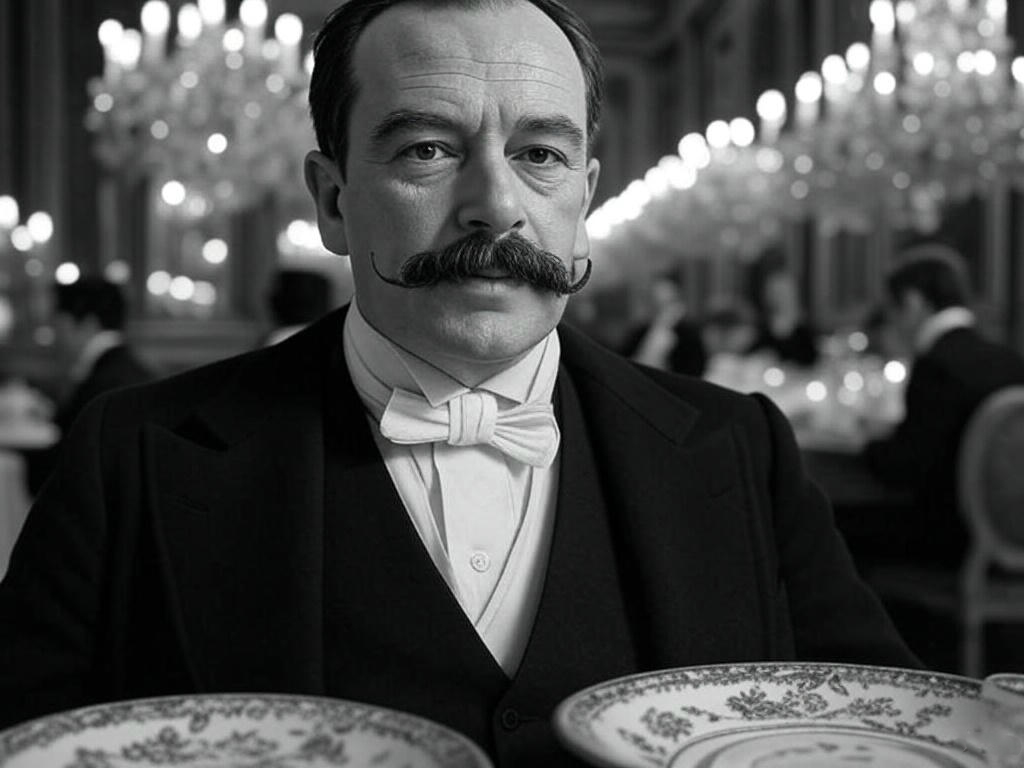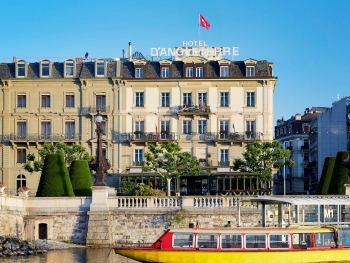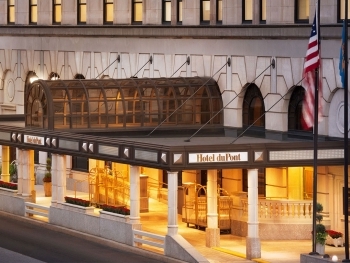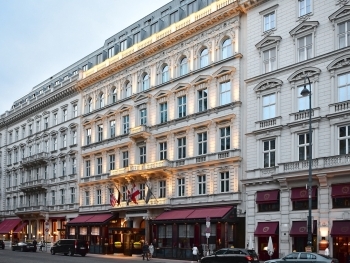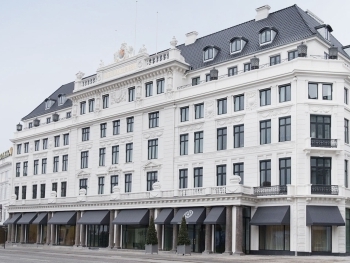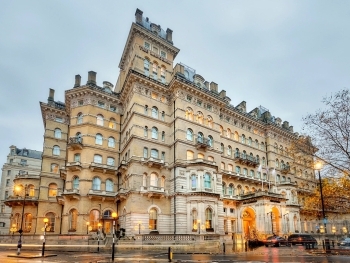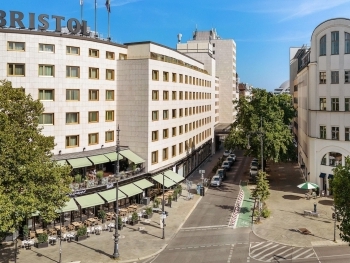A Humble Beginning in the Swiss Alps
César Ritz was born on February 23, 1850, in Niederwald, a small, remote village in the Swiss canton of Valais. He was the youngest of thirteen children in a modest family of goat herders. Life in the Alps was rugged, but it built resilience—something the young César would need in abundance for the career that awaited him.
At the age of 15, Ritz left the mountains for Paris, a decision that would mark the first step in an extraordinary rise from rural obscurity to becoming a global icon of luxury. Paris in the late 1860s was on the cusp of transformation and opulence. Ritz arrived just before the Franco-Prussian War and soon began working in some of the city’s finest establishments. He started humbly, doing menial jobs, but quickly displayed a knack for hospitality—an eye for detail, a sense of anticipation, and a charm that disarmed even the most difficult guests.
Learning from the Best: The Formative Years
Ritz’s early years in Paris provided an invaluable education. He apprenticed in some of the city’s most prestigious restaurants, absorbing the intricacies of fine service. By his twenties, he had worked as maître d’hôtel at an elegant establishment near the Champs-Elysées. He then moved through a circuit of elite European resorts—Vienna, Nice, Lucerne, Monte Carlo—gaining not just experience, but also a deep understanding of Europe’s upper classes and their travel patterns. This would become his secret weapon.
Ritz soon began managing prestigious hotels, including the Grand National in Lucerne and Hotel de Paris in Monte Carlo, where he started crafting his distinct brand of service: personalized, elegant, and unobtrusively perfect. He opened his own hotels, including the Hotel Minerva in Baden-Baden and the Hotel de Provence in Cannes, developing a clientele among royalty and aristocracy who would remain loyal for decades.
The Turning Point: The Savoy, London
The real breakthrough in Ritz’s career came in 1889, when he was hired to manage The Savoy Hotel in London—a bold venture by impresario Richard D’Oyly Carte, who envisioned a grand hotel that offered not only opulence but also Parisian standards of cuisine and service.
Ritz assembled a formidable team, including François Rinjoux, Louis Echenard, and most significantly, Auguste Escoffier, the legendary chef who would become a lifelong collaborator. Ritz and Escoffier set out to transform London’s staid and insular dining culture. At the time, public dining was frowned upon, especially for women, and Sunday night dinners were deemed scandalous.
Ritz swept aside these conventions. He introduced after-theatre suppers, made it acceptable for couples to dine in public, and helped usher in a more cosmopolitan, relaxed London social life. Soon, The Savoy became the epicenter of Edwardian glamour, hosting theatrical stars like Sarah Bernhardt, Henry Irving, and Ellen Terry, and attracting society figures such as Elizabeth de Grammont, who in 1896 became the first woman in London to smoke a cigarette in public—at The Savoy Restaurant.
Ritz’s genius wasn’t just in service but in staging social theatre. He understood that luxury was as much about ambiance and status as it was about silverware and chandeliers. Under his management, The Savoy became both a sanctuary of comfort and a stage for modern elegance.
Conflict, Scandal, and Dismissal
Despite the brilliance of his leadership, Ritz’s ambitions outgrew The Savoy. By the mid-1890s, he was diverting his attention to other ventures, including interests in Rome’s Grand Hotel, Claridge’s in London, and even hotel projects in Egypt and the United States. The financial rewards were immense—in 1895 alone, Ritz and Echenard earned £9,698, an astronomical sum for the era.
However, this success bred resentment and suspicion. Ritz was accused of treating The Savoy as his personal office, accommodating business partners at the hotel’s expense, and even diverting provisions for his private use. Escoffier was similarly entangled in commercial side-deals involving hotel supplies.
On March 7, 1898, Ritz, Echenard, and Escoffier were abruptly dismissed from The Savoy for "gross negligence and breaches of duty." The fallout was dramatic: police were called in to escort rebellious kitchen staff off the premises, and London’s newspapers were abuzz with talk of a “Savoy Revolution.”
Lawsuits followed. Although the matter was eventually settled out of court—with Ritz repaying £6,377 and Escoffier £8,000—the affair marked a bitter end to an otherwise illustrious chapter in Ritz’s career.
Rebirth: The Ritz Hotels Legacy
Unbowed, César Ritz quickly refocused his energies on a bold new vision: his own brand of hotels. In 1898, he opened the Hotel Ritz in Paris, designed from the ground up to embody his philosophy of discreet luxury and service perfection. It was an instant success. In 1906, he opened The Ritz Hotel in London, which soon rivaled The Savoy in grandeur and sophistication.
The Ritz brand stood for elegance, innovation, and refinement. It attracted the crème de la crème of international society, from European royalty to Hollywood stars. As Escoffier continued to create legendary dishes—Peach Melba, Crêpes Suzette, Chaud-Froid—Ritz curated an experience where every detail, from flowers to furnishings, was meticulously chosen.
Ritz also lent his name to ventures across Europe, including in Madrid, Budapest, and Barcelona, and his influence stretched to the Americas through what would eventually become the Ritz-Carlton group.
Final Years and Decline
In 1902, Ritz suffered a nervous breakdown, likely brought on by overwork and stress. Though he continued to work intermittently, his health steadily declined. In 1912, he was admitted to a hospital in Lausanne, and two years later, he moved to a clinic near Küssnacht, near Lucerne. On October 24, 1918, Ritz passed away—ironically, alone, as wartime travel restrictions delayed his wife Marie-Louise’s arrival until after his death.
Legacy: The Man Who Defined Luxury
César Ritz left behind more than just hotels—he left a philosophy of hospitality. His name became shorthand for class, elegance, and refinement. To this day, “ritzy” means glamorous, and The Ritz remains the gold standard in luxury hospitality.
From a barefoot boy in the Alps to the toast of London and Paris, Ritz’s journey is one of visionary brilliance, audacious ambition, and the occasional scandal. He didn’t just redefine hotel management—he invented modern luxury.
As Marie Ritz once recalled, her husband believed that “the customer is never wrong.” That belief, combined with taste, imagination, and discipline, created an empire that still shines more than a century later.
Further Reading:
- The Hotelier Who Invented Luxury: César Ritz and His Legacy
- Marie Ritz: Memories of a Hospitality Icon
- Dining with Royalty: Auguste Escoffier and the Ritz Empire
